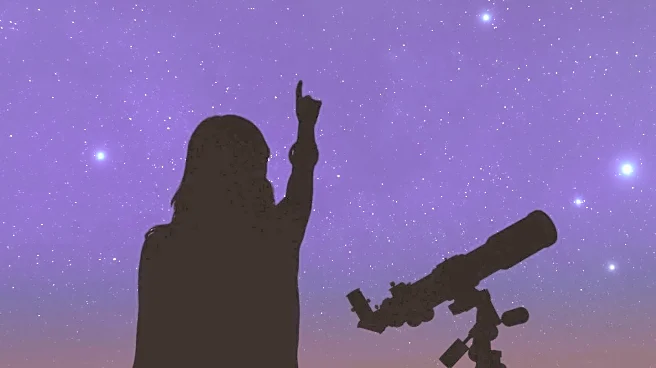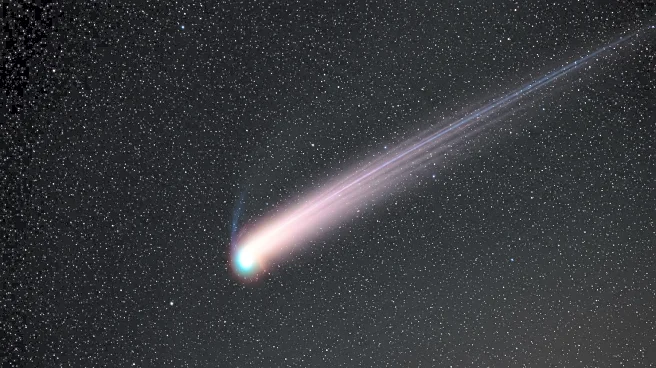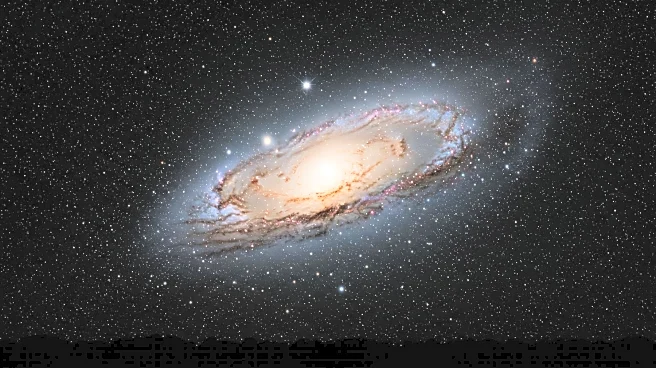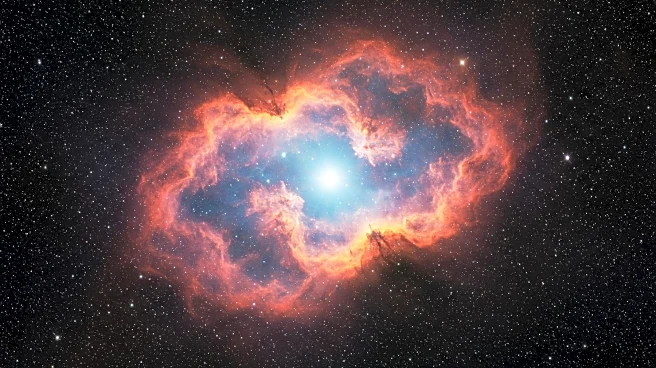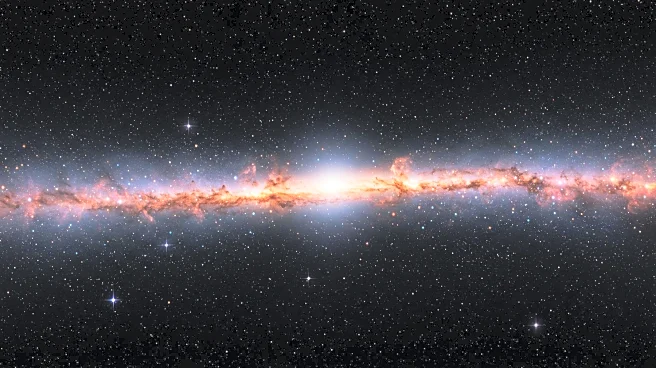Rapid Read • 8 min read
The Vera C. Rubin Observatory, located in northern Chile and operated by the National Science Foundation and the US Department of Energy, has released a series of breathtaking images from its 10-year survey of the southern night sky. These images, available at rubinobservatory.org/gallery, showcase the beauty of the cosmos, a by-product of the observatory's mission to expand knowledge of the universe. The observatory features the world's largest digital camera, the Legacy Survey of Space and Time camera, which boasts a 3.2-gigapixel sensor, offering resolution far superior to high-definition television. This technological marvel captures distant galaxies with remarkable detail, providing a portal to realms beyond human comprehension.
AD
The release of these images underscores the intersection of science and art, offering a unique perspective on the universe that transcends traditional aesthetic boundaries. The observatory's work not only advances scientific understanding but also enriches cultural appreciation of the cosmos. By capturing the vastness and beauty of space, these images challenge our perceptions and inspire wonder, potentially influencing fields such as astronomy, photography, and art. The observatory's collaboration with major scientific institutions highlights the importance of international cooperation in advancing technological capabilities and expanding human knowledge.
As the Vera C. Rubin Observatory continues its survey, it is expected to produce more images that will further enhance our understanding of the universe. These images may lead to new discoveries about galactic rotation rates and other cosmic phenomena. The observatory's findings could influence future research directions and inspire technological advancements in imaging and data analysis. Additionally, the observatory's work may spark public interest in astronomy and science, encouraging educational initiatives and fostering a deeper appreciation for the universe.
The observatory's images raise questions about the role of technology in art and the nature of beauty. They challenge traditional notions of artistic creation, as algorithms and machines play a significant role in capturing these cosmic scenes. This development prompts reflection on the relationship between human agency and technological innovation in the creation of art. Furthermore, the images invite contemplation on humanity's place in the universe, offering a perspective that is both humbling and awe-inspiring.
AD
More Stories You Might Enjoy
